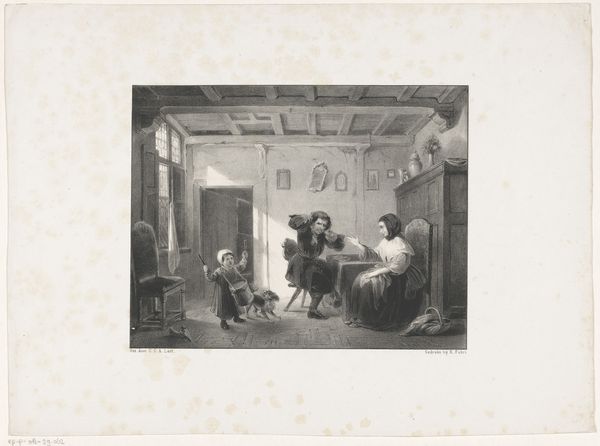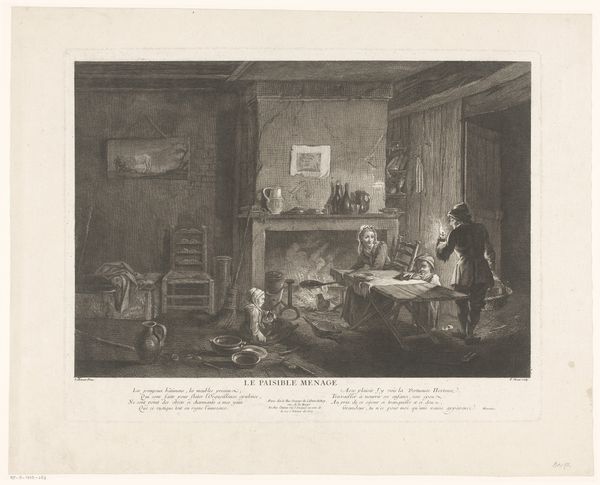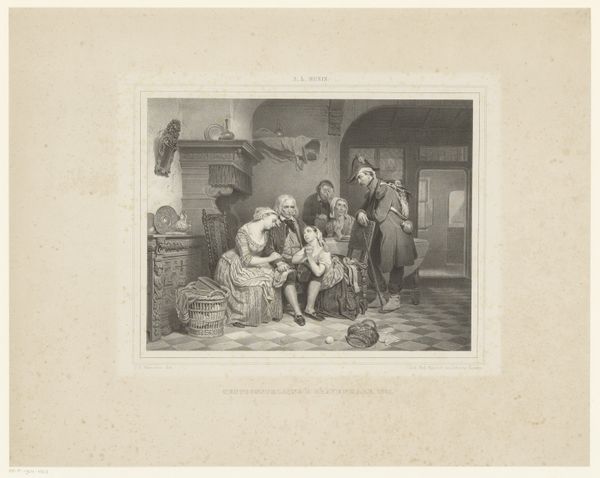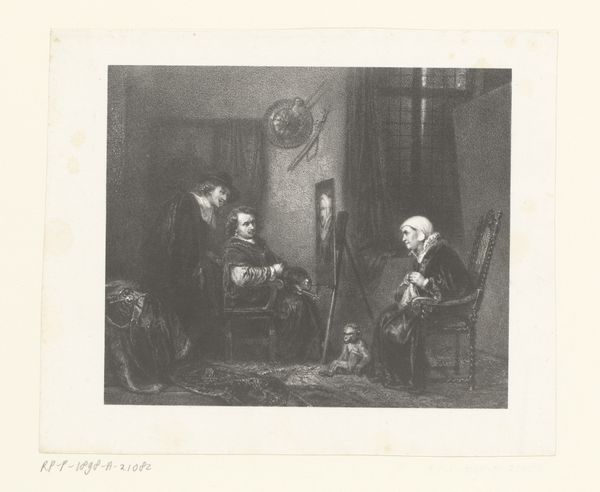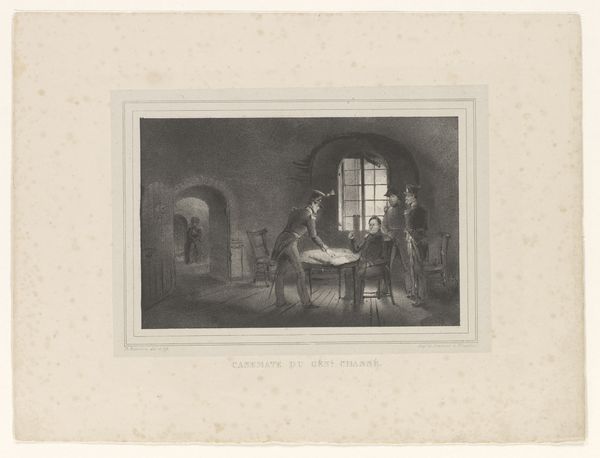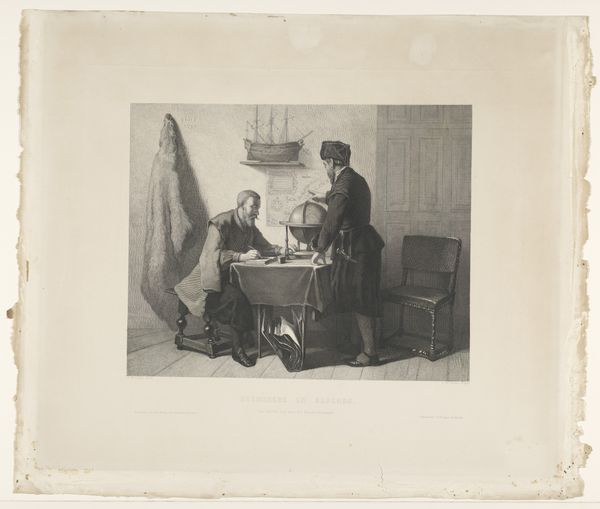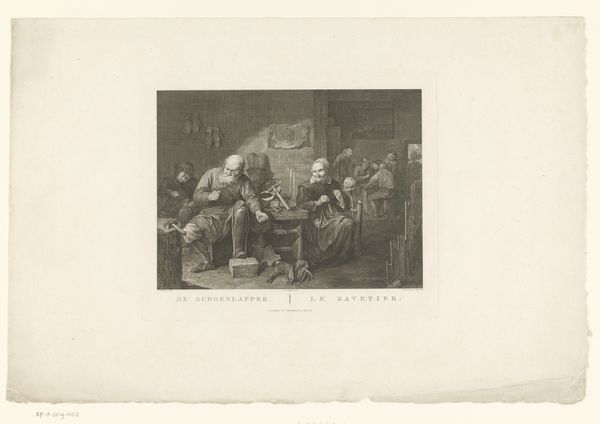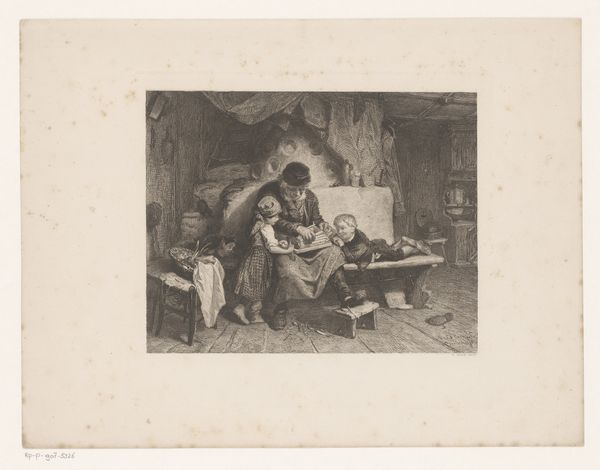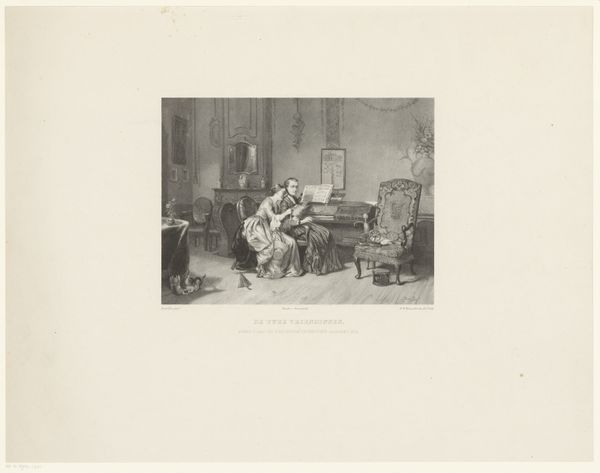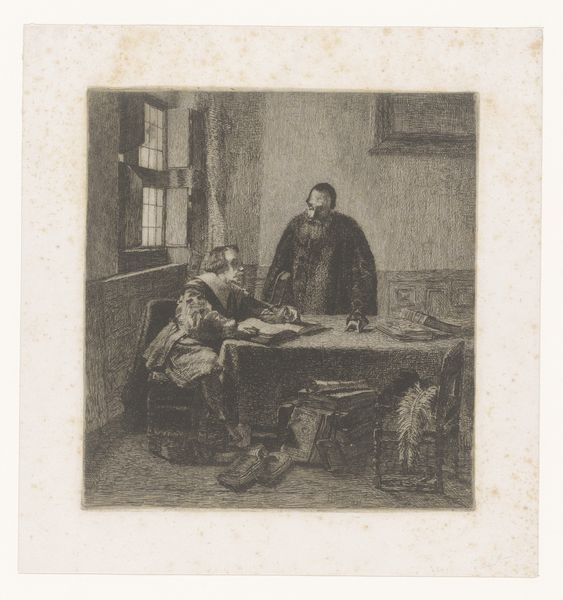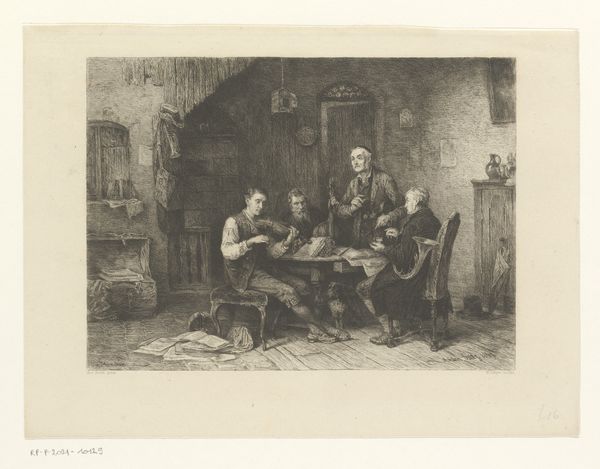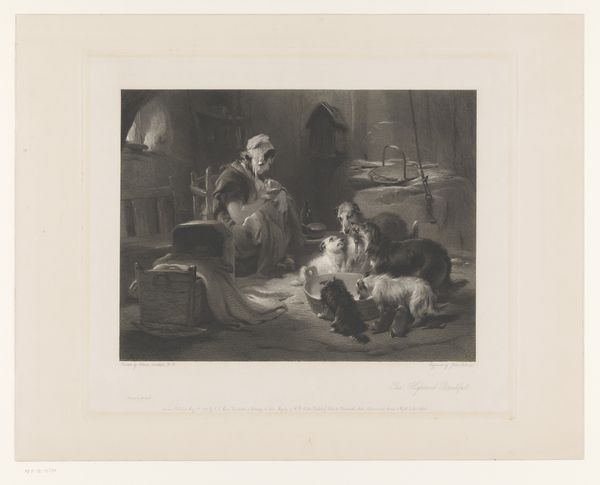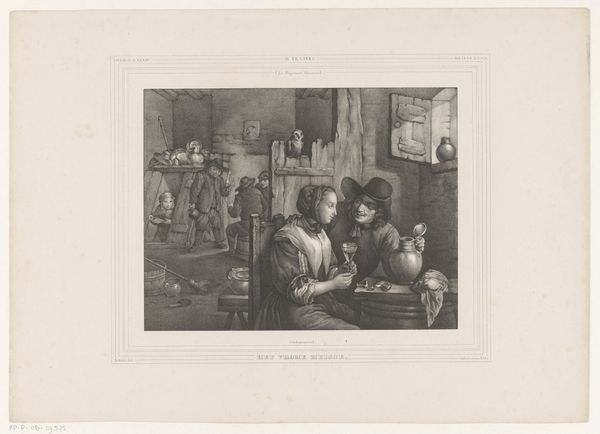
print, engraving
#
print photography
# print
#
romanticism
#
genre-painting
#
history-painting
#
engraving
Dimensions: height 274 mm, width 363 mm
Copyright: Rijks Museum: Open Domain
Curator: Here we have "Kaartspelers in herberg," or "Card Players in a Tavern," an engraving from around 1840-1843 by Franciscus Bernardus Waanders, currently held at the Rijksmuseum. My first impression is the stark contrast of light and shadow which creates a dramatic tension within this otherwise quotidian scene. Editor: Indeed, it has an almost theatrical feel, doesn’t it? And the textures, visible even in this engraving—you can practically feel the rough-hewn wood of the table and benches. It speaks to the everyday materials, doesn’t it? This looks like the local tavern! Curator: It does. Tavern scenes were incredibly popular in genre painting and prints, capturing slices of daily life that reflected—or perhaps constructed—certain societal values. The focus here seems to be the camaraderie and maybe also the inherent risk and tension present in gambling, behaviors judged, of course, by those outside that immediate social setting. Editor: Right. The means of leisure become a site for moral judgement. But looking closely at the paper itself—the engraver has to skillfully render those material contrasts, simulating cloth and wood solely through line work and ink. It emphasizes skill but also, you have to imagine, endless labor. Curator: Exactly, and Waanders was a prominent figure within the Dutch printmaking landscape, and pieces such as this show the artistic and entrepreneurial spirit to participate and grow within it, producing work aimed for the popular market consumption and appeal. It offered a palatable view into contemporary culture, even for those who would never visit such an establishment themselves! Editor: Yes, mass reproduction shaping taste, even directing it in some ways! And I'm also wondering how the card game impacts class here: Is it merely a pastime or something more central to exchange or possibly exploitation? We are invited to observe, yes, but we have to consider the economics embedded in the moment. Curator: Good point. Ultimately, this print gives us a snapshot—carefully constructed—of 19th-century Dutch social dynamics as well as demonstrates its contemporary print market demand and possibilities. Editor: And for me, I will not forget how the humbleness of the tavern setting finds a striking resonance with the technical achievements made visible in the skillful manipulation of ink on paper.
Comments
No comments
Be the first to comment and join the conversation on the ultimate creative platform.
